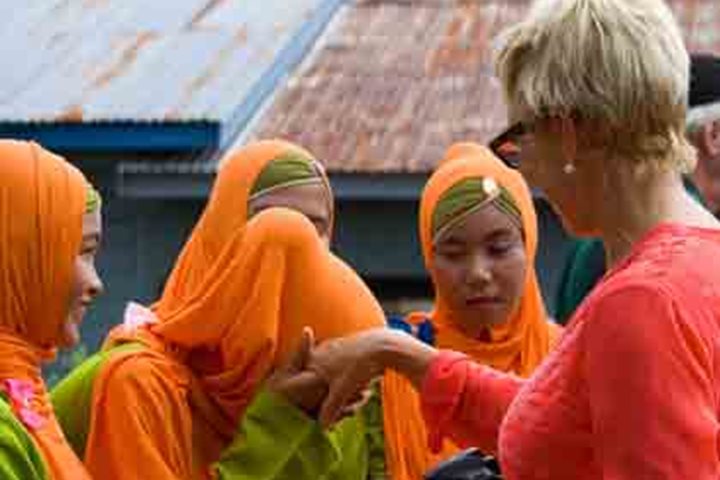Bako National Park is the oldest and smallest national parks in Sarawak, Malaysia, yet known for its amazing diversity. It was established in 1957 and includes more than 27 square kilometers (10.53 square miles) at the tip of the Muara Tebas peninsula. Rainforest, steep cliffs, rocky headlands, stretches of remote white sandy beaches and hiking trails are features of this park. In addition to everything the park offers, perhaps the reason that so many people visit is the abundant wildlife near the boardwalks beginning at park headquarters.
This morning some of us chose to join long and medium hikes through the rainforest ending with a swim at a waterfall, and others walked leisurely observing and photographing wildlife. Overcast skies and cooler temperatures provided the opportunity for plenty of monkey business.
Bako is home to approximately 150 endangered proboscis monkeys that were swinging in the treetops. Proboscis monkeys are endemic to Borneo. This is one of the largest monkey species native to Asia, with males weighing over 50 pounds, and twice the size of females. The most noticeable feature is the nose, which can be 4 inches in length. Proboscis monkeys are perhaps the most aquatic of all primates, capable of swimming across rivers and even for distances over 50 feet underwater.
Long-tailed macaques, whose tails are often longer than their bodies, shared the boardwalk with us, stopping to investigate our backpacks and posing for photographs. Macaques live in matrilineal social groups with females being dominant. Males leave the group when they reach puberty and are considerably larger than females. Macaques are excellent jumpers, good swimmers, and spend their morning foraging and afternoons sleeping in the trees.
Silvered langurs, also known as the silvered leafed monkeys, were eating hibiscus and leaping from tree to tree in the canopy above us. The young are taken care of by females communally. The biological mother stops producing milk after just twelve months and other females in the troop may nurse the babies for an additional six months.
This morning, the Bornean bearded pigs followed the macaques exploiting the monkey business. The pigs feed on the fruit that is dropped or knocked off the branches by the primates. Bearded pigs are generally most active in the morning and in the afternoon prefer wallowing in the mud and resting in cool areas. Mothers are protective of their offspring and will chase away intruders.
Exploring the distinctive features of the park by Zodiac allowed us close looks at the sandstone cliffs and rugged coastline in the late afternoon. The sandstone itself is derived from sediments deposited as a delta along an ancient coastline about 75 million years ago. The loose sand was cemented together by silica precipitated by moving water in the sea. The beauty today is a landscape of vertical cliffs and prominent rock formations.










